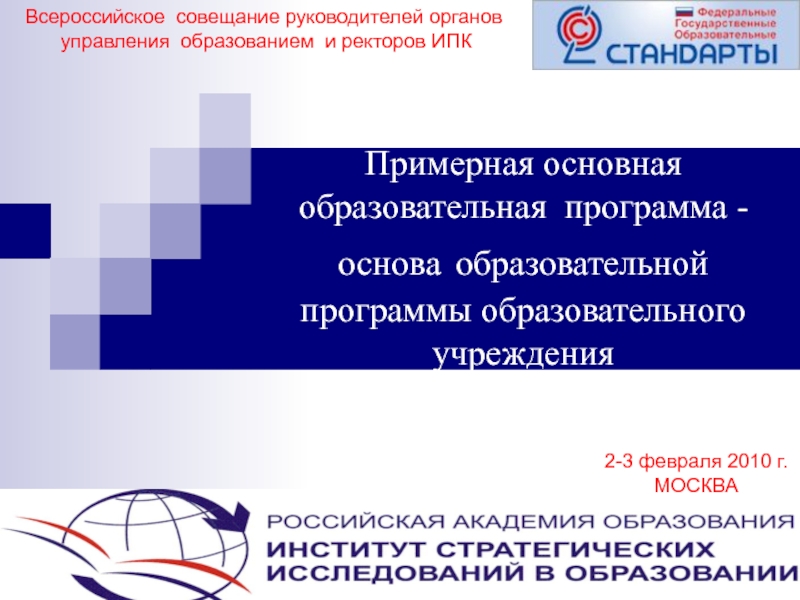- Главная
- Разное
- Дизайн
- Бизнес и предпринимательство
- Аналитика
- Образование
- Развлечения
- Красота и здоровье
- Финансы
- Государство
- Путешествия
- Спорт
- Недвижимость
- Армия
- Графика
- Культурология
- Еда и кулинария
- Лингвистика
- Английский язык
- Астрономия
- Алгебра
- Биология
- География
- Детские презентации
- Информатика
- История
- Литература
- Маркетинг
- Математика
- Медицина
- Менеджмент
- Музыка
- МХК
- Немецкий язык
- ОБЖ
- Обществознание
- Окружающий мир
- Педагогика
- Русский язык
- Технология
- Физика
- Философия
- Химия
- Шаблоны, картинки для презентаций
- Экология
- Экономика
- Юриспруденция
Introduction to Databases презентация
Содержание
- 1. Introduction to Databases
- 2. CONTENT: 1.Bases of database systems: concept, characteristic,
- 3. INTRODUCTION TO
- 5. Relational model. The relational model for the
- 6. DATABASE MANAGEMENT SYSTEM
- 7. Basic terminology in Databases
- 8. Basic terminology in Databases
- 9. Object. An object is a component in
- 10. Table. A table is a group of
- 11. Field. A field is a column on
- 12. Record. A record is a row on
- 13. Primary key. A primary key is used
- 14. Foreign key. A foreign key is a
- 15. Relationships. Two tables/entities in a database may
- 17. EXTERNAL, CONCEPTUAL, AND INTERNAL VIEWS A
- 18. LANGUAGES Database languages are special-purpose languages, which
- 19. DATABASE MANAGEMENT APPLICATIONS There are
- 20. CONCLUSION Databases today are essential to every
- 21. REFERENCE DATABASE SYSTEMS. The Complete Book.
- 22. LINKS https://en.wikipedia.org/wiki/Database https://raima.com/database-terminology/ https://en.wikipedia.org/wiki/One-to-one_(data_model) https://en.wikipedia.org/wiki/One-to-many_(data_model) https://en.wikipedia.org/wiki/Many-to-many_(data_model)
Слайд 1KAZAKH NATIONAL AGRARIAN UNIVERSITY
Department: Automation and information technologies
DATABASE SYSTEMS
CREATED BY: MALIKOV
CHECKED BY: SEIDALIEVA G.
Слайд 2CONTENT:
1.Bases of database systems: concept, characteristic, architecture.
2. Data Models
3. Database Management
4. Basic terminology in Databases
5. Types of Relationships
6. External, conceptual, and internal views
7. Database Management Applications
Слайд 3 INTRODUCTION TO DATABASES
A database
Слайд 4 DATA
Hierarchical model. In a hierarchical model, data is organized into an inverted tree-like structure. This structure arranges the various data elements in a hierarchy and helps to establish logical relationships among data elements of multiple files. Each unit in the model is a record which is also known as a node. Each record has a single parent.
Network model. The network model tends to store records with links to other records. Each record in the database can have multiple parents, i.e., the relationships among data elements can have a many to many relationships. So this model is an expansion to the hierarchical structure, allowing many-to-many relationships in a tree-like structure that allows multiple parents.
The network model provides greater advantage than the hierarchical model in that it promotes greater flexibility and data accessibility.
Слайд 5Relational model. The relational model for the database management is a
Object–Oriented model.. It provides full-featured database programming capability, while containing native language compatibility. It adds the database functionality to object programming languages. This approach is the analogical of the application and database development into a constant data model and language environment. Applications require less code, use more natural data modeling, and code bases are easier to maintain. Object developers can write complete database applications with a decent amount of additional effort. But object-oriented databases are more expensive to develop.
Слайд 6 DATABASE MANAGEMENT SYSTEM
A Database Management System (DBMS)
Obtaining subsets of data software designed for the purpose of managing databases based on a variety of data models. A DBMS is a complex set of software programs that controls the organization, storage, management, and retrieval of data in a database. DBMS are categorized according to their data structures or types, sometime DBMS is also known as a Database Manager. Data management tasks fall into one of four general categories as given below:
Entering data into the database.
There are several advantages in DBMS such as reduced data redundancy and inconsistency, enhanced data integrity, improved security etc.
Слайд 7Basic terminology in Databases
Database
Object
Relationships DBMS Foreign Key
Field
Record Primary Key
Слайд 8 Basic terminology in Databases
Database. A database is
Слайд 9Object. An object is a component in the database such as
Слайд 10Table. A table is a group of related data organized in
Слайд 11Field. A field is a column on a datasheet and defines
Слайд 12Record. A record is a row on a datasheet and do
Слайд 13Primary key. A primary key is used to uniquely identify each
Слайд 14Foreign key. A foreign key is a field (or fields) that
Слайд 15Relationships. Two tables/entities in a database may relate to each other
Слайд 17EXTERNAL, CONCEPTUAL, AND INTERNAL VIEWS
A database management system provides three views
The external level defines how each group of end-users sees the organization of data in the database. A single database can have any number of views at the external level.
The conceptual level unifies the various external views into a compatible global view. It provides the synthesis of all the external views. It is out of the scope of the various database end-users, and is rather of interest to database application developers and database administrators.
The internal level (or physical level) is the internal organization of data inside a DBMS. It is concerned with cost, performance, scalability and other operational matters. It deals with storage layout of the data, using storage structures such as indexes to enhance performance.
Слайд 18LANGUAGES
Database languages are special-purpose languages, which do one or more of
Data definition language – defines data types such as creating, altering, or dropping and the relationships among them
Data manipulation language – performs tasks such as inserting, updating, or deleting data occurrences
Query language – allows searching for information and computing derived information.
Слайд 19DATABASE MANAGEMENT APPLICATIONS
There are several different database management applications which
Some of the database management applications are listed below:
MySQL IBM DB2
Oracle
Sybase Microsoft Access



























